Weigela - care in the fall and preparation for winter: pruning and shelter
Weigela is an insanely decorative, brightly flowering shrub that quickly gained popularity among many flower growers, but some of them are rapidly losing interest in the plant due to freezing in the winter.
Next, let's talk about what kind of care the shrub needs in the fall, how to properly prepare the weigela for winter, so that next season it will delight you with its beautiful, violent flowering.
Interesting! Despite the fact that weigela is considered a relatively capricious plant, however, compared to forsythia and deytion, it is much more tenacious, that is, it grows and blooms beautifully, without creating unnecessary problems for the grower.
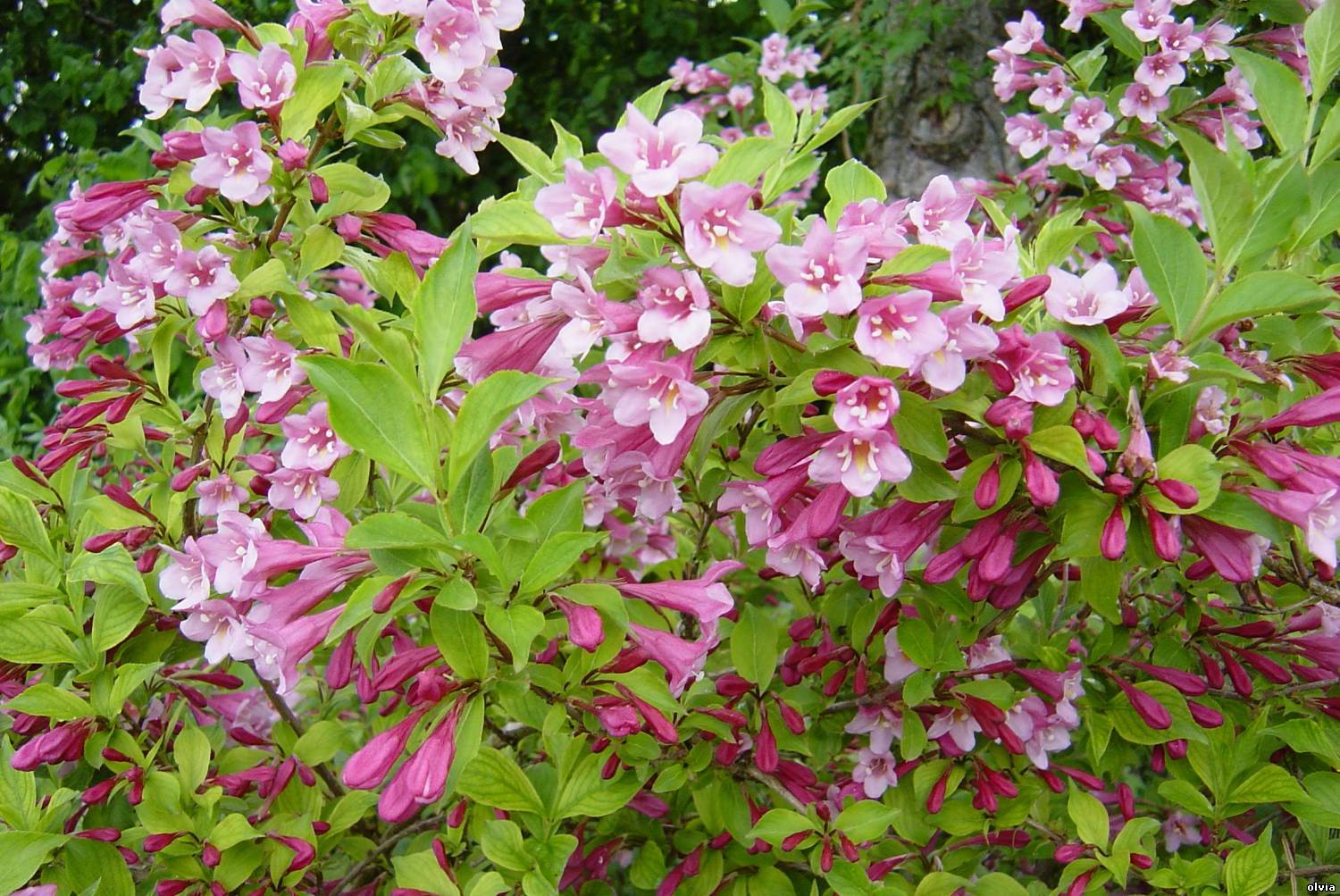
Content
Features of caring for weigela in autumn and preparation for winter: main activities
In general, caring for a weigela after flowering and in autumn is quite standard for a perennial plant and includes the following operations:
- pruning faded twigs after flowering;
- a haircut to correct the shape of the bush (if necessary);
- top dressing with phosphorus-potassium fertilizers for better wintering;
- mulching and sheltering shrubs for the winter.
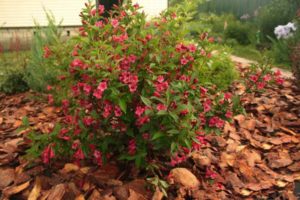
Pruning weigela in spring, after flowering and in autumn
Immediately after planting, while the plant is still young, it is recommended to immediately begin to give it the desired shape, i.e. carry out shaping pruning (haircut).
Advice! If you want to ball, then leave many short branches, shortening them every year. If you want to tree on a trunk - first grow this bole, i.e. let one shoot grow upward, and remove the rest completely.
Alternatively, weigela can be grown on an interlaced stem with several (3) shoots.
Video: weigela on an intertwined stem
As for the timing of pruning, in the spring, as a rule, they carry out sanitary pruning after winter, cutting out frozen branches.
The fact is that in the spring you can clearly see which branches and buds to leave (they are alive), and which ones to remove and shorten (frozen).
Accordingly, before flowering, it is advisable to cut out only damaged (broken), frozen or ugly protruding branches, for example, hanging from the ground (spoiling the look of the bush).
Important! You should always trim to the kidney, i.e. make a cut immediately above the kidney and leave a stump no more than 0.5-1 cm.
In general, at the same time (early spring) you can cut your bush, i.e. do formative pruning, but it is better to do this after flowering or in late autumn (but only after leaf fall, so that the buds do not awaken).
Trim = shorten the tips to encourage lateral growth and new shoots. As a rule, they are shortened by 1/3 of the length, or a maximum of 2/3.
It is necessary to shorten first of all focusing on the shape of the bush.
As you know, the first time weigela blooms on the shoots of last year, and the second time - on the shoots of the current year (naturally, more poorly).
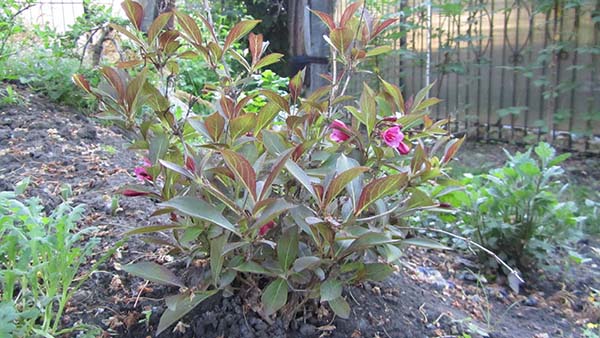
Accordingly, the abundant and reusable flowering of the weigela will depend on its timely and regular pruning.
So, if you want to see weigela re-flowering, then immediately after flowering you will need to cut off all faded flowers (the ends of faded branches).
Advice! If every year after flowering, shorten last year's branches (haircut-shaping), the bushes will be more compact and it will be easier to cover them.
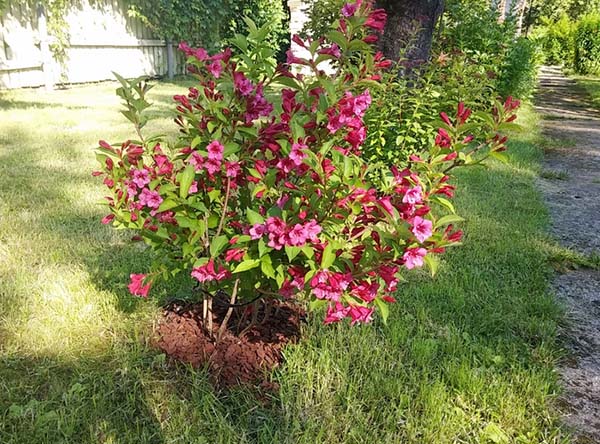
Also every 3-4 years it is recommended to carry out shrub rejuvenationremoving all the old 3-4 year old branches from it.
Video: flowering and formation of weigela
Autumn feeding of weigela after flowering
Perhaps it's not a secret for anyone that for better wintering, all perennial plants require phosphorus-potassium fertilizers.
Therefore, after the second flowering, in September, feed your weigels with one of the following fall fertilizers:
- Option 1 - superphosphate + potassium sulfate (potassium sulfate);
- Option 2 (the most effective, but not cheap) - potassium monophosphate;

- Option 3 - any ready-made specialized complex fertilizer marked "autumn".

Shelter weigela for the winter
It should be said right away that weigela does not have a high winter hardiness, on the contrary, the plant is considered to be quite thermophilic, which is why it often freezes over in the spring-winter period.
Therefore, most flower growers growing weigels on their plots have come to the conclusion that it is possible to achieve its flowering only by covering it for the winter.
Note! It is very important to initially choose the right place for planting it, namely, it should be sunny and protected from cold and drying northerly winds, for example, next to some kind of outbuilding or fence.
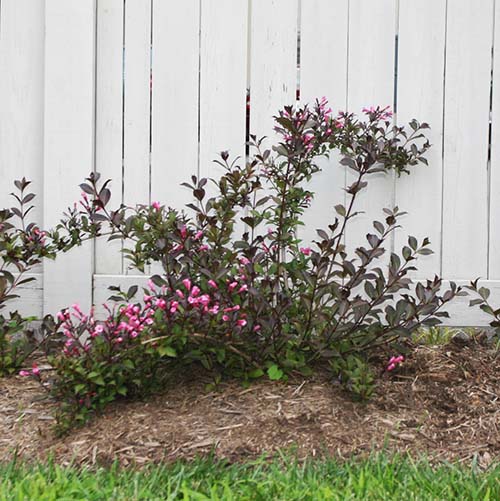
Of course, if you live in the South, then you will hardly experience difficulties with growing and wintering weigela, but for gardeners in the Middle Belt (Moscow region), Leningrad region and more northern cold regions, this is a real problem, especially if winters are snowless ...
Which varieties of weigela require mandatory shelter, and which is enough mulching
Variegated varieties are distinguished by the lowest winter hardiness and weaker immunity.
According to gardeners, in the winter, in variegated varieties, it simply sweeps away the entire aboveground part (or snow cover), and instead of a gorgeous bush you get more than a pitiful sight ...
But large fast-growing varieties often simply do not have time to prepare for winter (their shoots do not ripen), which is why they freeze, however, in the next season they usually recover (after all, they are called fast-growing for a reason) and again delight us with their flowering.
The best thing for growing in a cool climate, for example, in the same Middle zone (Moscow region), undersized or dwarf (up to 1-1.2 meters in height) are suitable red-leaved varieties weigels that winter well under the snow.
Interesting! It is believed that the most winter-hardy red-leaved variety of weigela is Bristol Ruby.
Also, in the conditions of the Moscow region, it winters perfectly without shelter of the Florida Victoria variety weigel.
Sometimes you can find a recommendation to put the Red Prince ("Red Prince").
Variegated and fast-growing varieties of weigela require compulsory shelter for the winter, but red-leaved ones can not be specially covered, except to mulch and throw snow on top.
Advice! In any case, it is better to cover young seedlings in the first and second winter.
How to mulch and how to cover the weigela for the winter
Weigels can be mulched with humus, compost and leaves of decorative trees (but not fruit trees).
How to mulch?
Just cover the bushes with mulch on all sides and that's it.
And in winter, you can additionally throw snow on top, of course, if there is any.
But covering weigels is much more difficult, because they do not have very flexible branches, so that it is convenient to bend them down (they are fragile and can easily break).
Therefore, you need to make a frame shelter or somehow tilt it a little (for example, by placing something) and cover it with non-woven material (spunbond, lutrasil).
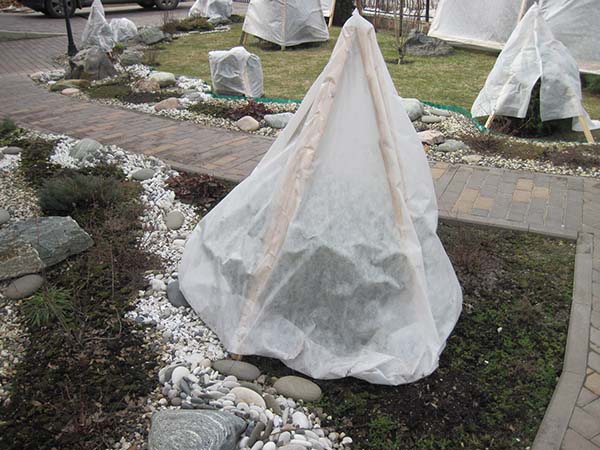
Thus, now you know that for the annual abundant flowering of the weigela, you need to regularly cut it off and cover it for the winter, as well as improve winter hardiness by making phosphorus-potassium dressings, or immediately choose a fairly winter-hardy variety.
Video: caring for a weigela and her wintering

